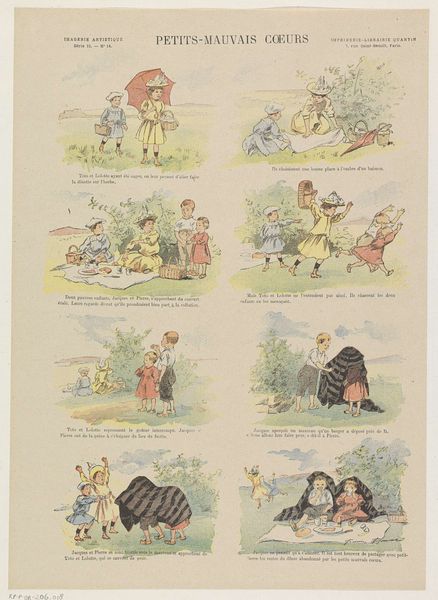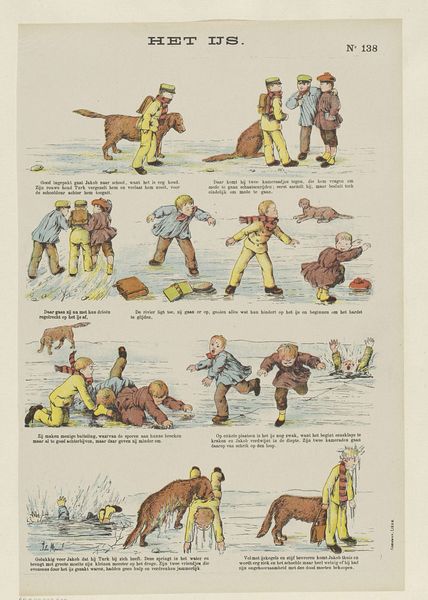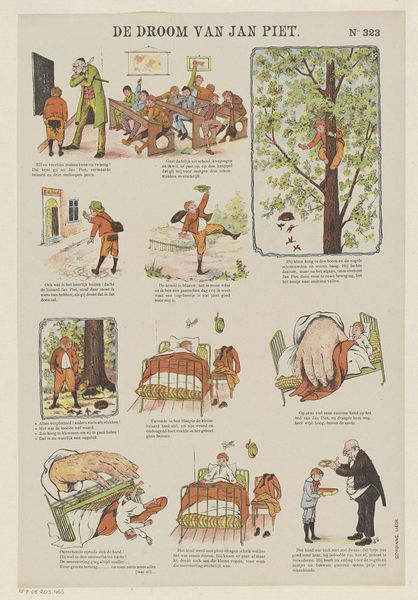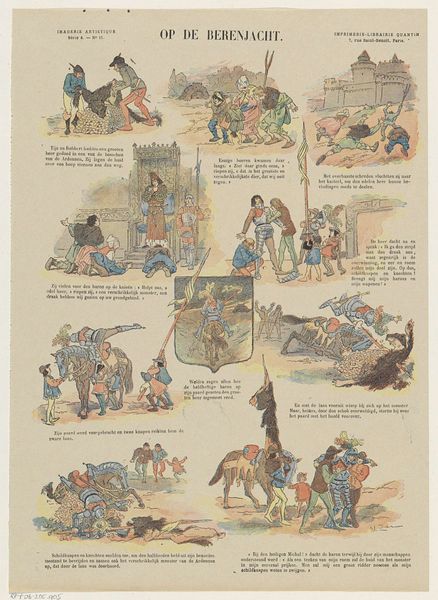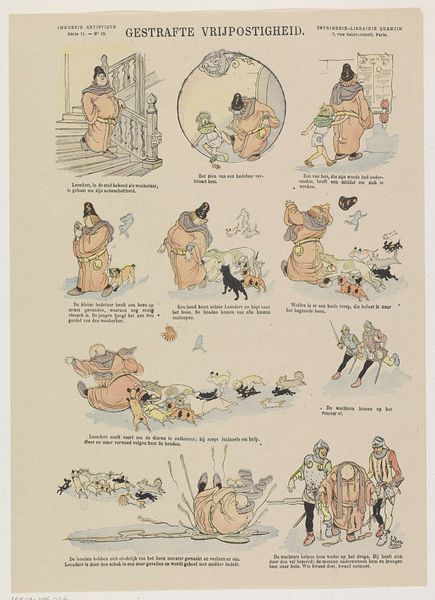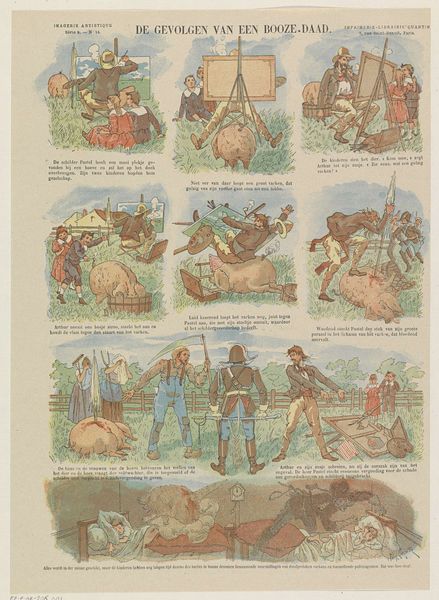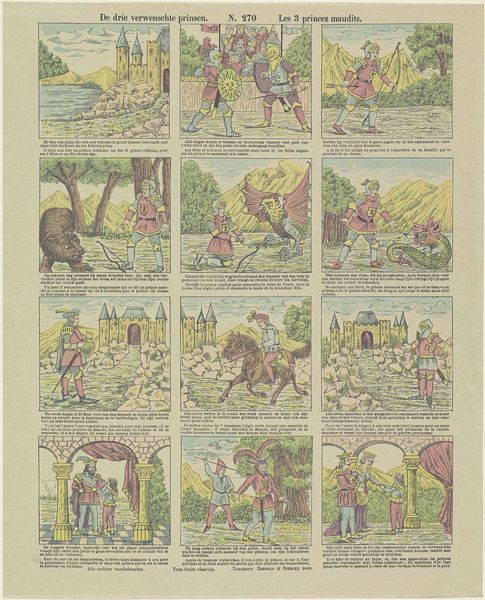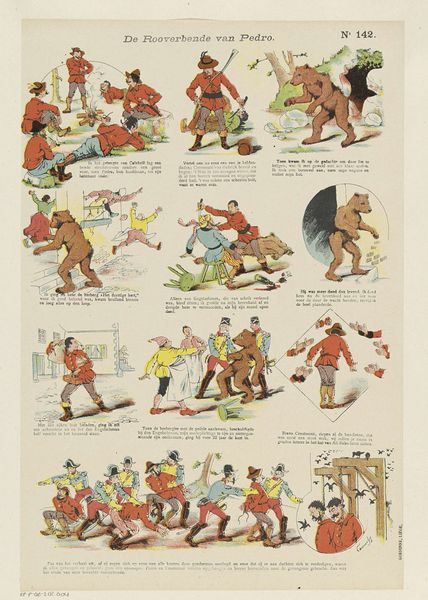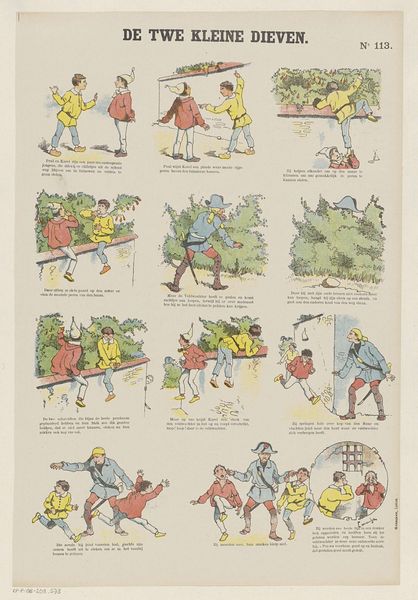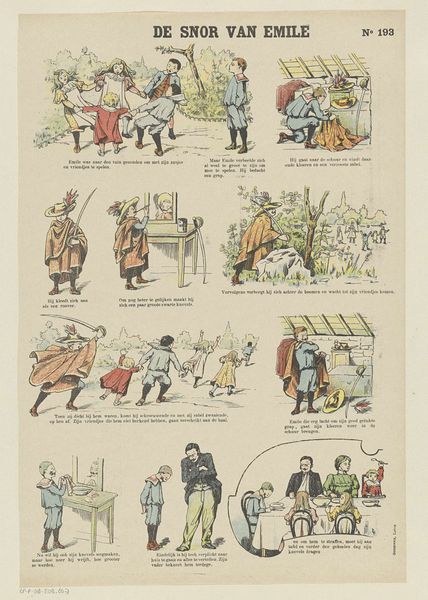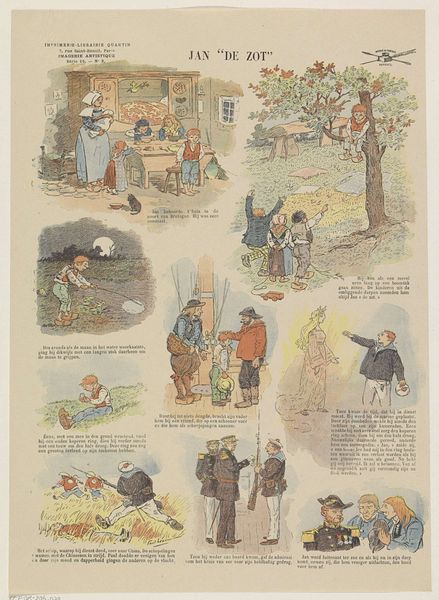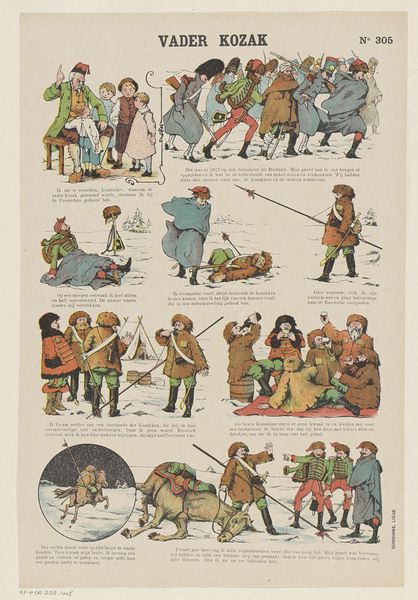
drawing, print, etching, watercolor
#
drawing
#
comic strip
# print
#
etching
#
watercolor
#
comic
#
watercolour illustration
#
genre-painting
Dimensions: height 368 mm, width 266 mm
Copyright: Rijks Museum: Open Domain
Editor: This is "De Beer" by Théophile Alexandre Steinlen, likely created between 1876 and 1890. It looks like a print, incorporating etching and watercolor. The work is structured as a comic strip. What immediately strikes me is the overt commentary it provides. What is your take? Curator: It's interesting how Steinlen, primarily known for his lithographs for Parisian cabarets and socialist magazines, uses a format here—the comic strip—usually reserved for mass consumption and often associated with disposable culture, to critique hunting practices. We must consider the means of production here: etching allowed for relatively quick reproduction and wider circulation of these images, therefore reaching more members of the public. How might the choice of watercolor, often seen as more "delicate," inform our understanding of the work, considering its subject matter? Editor: That’s a good point. I guess it softens the message. If this were only etching it may be less comical and more confrontational, less of a light-hearted critique and more of a polemic. What else stands out from a materialist approach? Curator: I find it fascinating that he is using printing, a mechanised and industrialized medium, to draw attention to, perhaps even subtly critique, certain social practices such as hunting, that may have been perceived at the time as pastimes of the elites. He’s democratizing critique through accessibility of the image itself. Moreover, the explicit representation of alcohol consumption alongside hunting highlights the cultural norms and social contexts within which hunting occurred. What implications might arise when we think about the availability of cheap alcohol and changes to hunting as it evolves into a sport? Editor: I hadn’t thought of that angle at all. I was focusing too much on the story, the narrative. It's interesting to consider the social and economic factors at play. Seeing this as an artifact, a commodity even, of its time, really reframes the image. Thanks! Curator: Indeed! Reflecting on how materials and means of production intersect with the critique within the piece allows for an even more nuanced understanding.
Comments
No comments
Be the first to comment and join the conversation on the ultimate creative platform.
